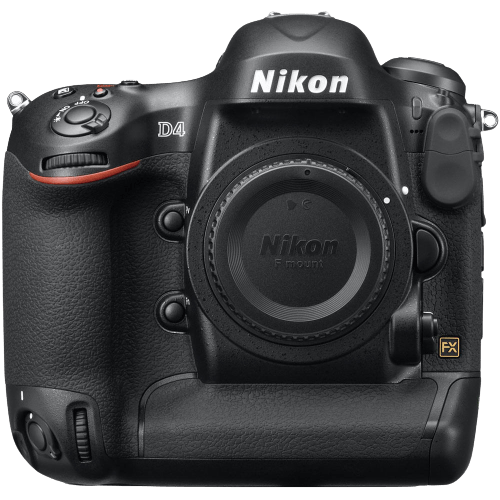Nikon D4 Specs and Scores

The Nikon D4 DSLR earns a score of 63/100 in our evaluation. Announced on January 6, 2012, and released the same year, it was initially priced at $5999. The camera measures 160 x 157 x 91mm and weighs 1340g or 2.95lbs.
While the Nikon D4 is almost a decade old, its specifications still hold relevance in today’s market. Its weight and size are comparable to current DSLRs, making it a reliable choice for photographers. However, newer models have surpassed it in terms of technological advancements and features. Nonetheless, the Nikon D4 remains a solid option for those seeking a dependable, high-quality DSLR camera.
Nikon D4 Overview and Optics
The Nikon D4 receives a score of 63 out of 100 for optics. This camera features 16.2 megapixels, an 11 frames per second shooting speed, and a CMOS sensor. Powered by the Expeed 3 processor, it has a DXOMARK sensor score of 89. The full-frame sensor size and Nikon F lens mount contribute to its capabilities.
Despite these specifications, the Nikon D4 lacks image stabilization, which might affect image quality in certain situations. The aspect ratio of 3:2 is standard for many cameras. Comparing the Nikon D4 to other cameras in today’s market, it holds up decently but may not be the top choice for those seeking advanced optical features.
The Nikon D4 is a reliable camera with a respectable optics score. However, its absence of image stabilization and average specifications may leave some photographers wanting more from their camera.
Nikon D4 Video Performance
The Nikon D4’s video capabilities score is 57/100. One of the key features of this camera is its Full HD resolution, providing 1920 x 1080 video dimensions. The maximum video frame rate is 30fps, which delivers smooth and clear footage. Additionally, the camera includes built-in time-lapse functionality, allowing for creative and dynamic video options.
However, considering today’s market, the Nikon D4’s video specifications are not exceptionally competitive. Many newer cameras offer 4K resolution and higher frame rates, resulting in more detailed and lifelike videos. Despite this, the Nikon D4 still provides solid video performance for those seeking Full HD capabilities.
Therefore, while the Nikon D4’s video capabilities are not groundbreaking, they remain suitable for users who prioritize Full HD resolution and time-lapse features.
Nikon D4 Features and Benefits
The Nikon D4’s features receive a score of 57 out of 100. With a screen size of 3.2 inches and a resolution of 921,000 dots, the display lacks a touchscreen, flip screen, GPS, WiFi, and Bluetooth capabilities.
In today’s market, the Nikon D4’s features seem outdated. The absence of a touchscreen and flip screen limit the camera’s functionality and user experience. GPS, WiFi, and Bluetooth are now standard in most modern cameras, offering seamless connectivity and geotagging options. The Nikon D4 falls short in these areas.
The Nikon D4’s features do not meet the expectations of current consumers. The camera’s limited specifications hinder its competitiveness and appeal in the market.
Nikon D4 Storage and Battery
The storage and battery of the Nikon D4 receive a score of 87 out of 100. This camera has two memory card slots, accepting Compact Flash and XQD cards, providing versatility and ample storage options for photographers. In today’s market, having multiple memory card slots is a valuable feature for professional photographers who need to manage large amounts of data.
The Nikon D4 boasts a battery life of 2600 shots with its EN-EL18 battery type. This impressive battery life outperforms many competitors, ensuring photographers can capture images for extended periods without needing to recharge or replace the battery. However, the camera lacks USB charging capabilities, which may be a drawback for some users who prefer the convenience of charging through a USB port.
Considering the storage and battery aspects, the Nikon D4 stands strong in the market with its dual memory card slots and long-lasting battery life. Despite the absence of USB charging, this camera remains a reliable choice for professionals who require efficient storage and power management.
